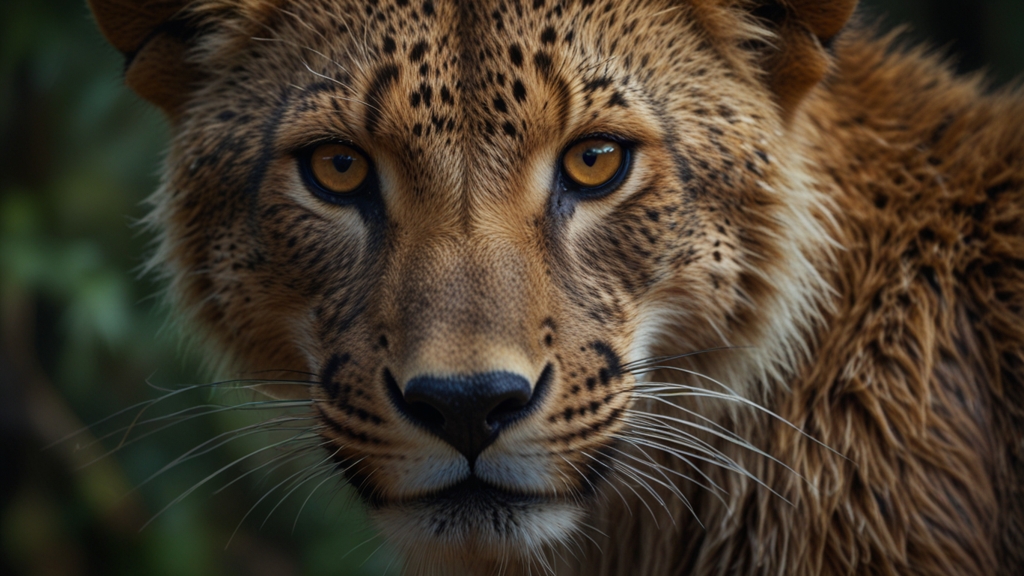Unraveling the Mysteries of Mammals: Secrets You Never Knew
Mammals, a diverse class of animals ranging from tiny shrews to gigantic whales, hold a plethora of secrets within their fascinating biology. These warm-blooded creatures are distinguished by their ability to nurse their young with milk produced from mammary glands. While much is known about mammals, there are countless intriguing mysteries that are less discussed. Let's dive into some of these captivating secrets.
The Bizarre Sleep Patterns of Marine Mammals
One of the most fascinating aspects of marine mammals, particularly cetaceans like dolphins and whales, is their unique sleep behavior. Unlike terrestrial mammals, these ocean inhabitants have evolved to sleep with only one hemisphere of their brain at a time. This phenomenon, known as unihemispheric slow-wave sleep, allows them to maintain consciousness and continue surfacing for air while resting.
"This adaptation is crucial for survival, as it enables marine mammals to stay alert to predators and manage vital functions in their watery environment," says Dr. Samantha Ray, a marine biologist.
Moreover, many seals exhibit a similar adaptation. They can sleep underwater while still being aware enough to regularly surface for air. This blend of vigilance and rest underscores the remarkable evolutionary flexibility of marine mammals.
Extraordinary Maternal Instincts
Mammals are renowned for their strong maternal instincts, but some go beyond the call of duty in ways that astonish scientists. A poignant example is the elephant, where mother elephants and other females in the herd actively participate in the upbringing of the young, a phenomenon known as allomothering. This collective effort ensures that the calves receive optimal care and social learning opportunities.
"Elephants have intricate social structures, and the community’s support for the young is a testament to their intelligence and empathy," remarks Dr. Andrew Thompson, an elephant behavior expert.
Another striking example is the polar bear. A mother polar bear can lose up to half of her body weight during the months-long period when she dens and nurses her cubs. She goes without food during this time, solely relying on her fat reserves to sustain herself and produce nutrient-rich milk for her offspring.
The Superpowers of the Human-Like Mammals
When we think of mammals with extraordinary abilities, rodents and bats might not be the first to come to mind. Yet, these creatures possess some of the most remarkable adaptations. Take the little brown bat, for instance. It can consume up to 1,200 insects in just one hour, showcasing an incredible metabolic rate essential for sustaining flight in its energetic lifestyle.
Moreover, the naked mole-rat defies aging processes that typically plague mammalian life. These creatures exhibit an unusual resistance to cancer, low metabolic and reproductive rates, and can live up to 30 years, significantly longer than other rodents. Research into their biology could unlock mysteries related to human aging and disease resistance.
Mammals and Their Communication Marvels
Communication in mammals is a rich and varied field, ranging from ultrasonic echolocation in bats to complex language-like calls in primates. Whales, notably the humpback whale, are celebrated for their complex songs that can travel vast distances underwater. These vocalizations are thought to play a role in mating and social interaction, although many aspects remain enigmatic.
"Understanding whale communication could provide insights into the evolution of complex language and social structures in mammals," posits Dr. Jillian Roberts, a cetacean communication researcher.
On land, prairie dogs employ an intricate system of vocal warnings that can specify the type, size, and speed of an approaching predator. This level of detail in their alarm calls points to a sophisticated communication network that rivals that of many primates.
Conclusion
Mammals never cease to amaze with their adaptability, intricate social structures, and unique physiological traits. From the enigmatic sleep patterns of marine mammals to the extraordinary maternal care exhibited by elephants and polar bears, these creatures reveal the innovativeness and complexity of evolution. The more we study them, the more we uncover about the fascinating tapestry of life that mammals weave on our planet.









